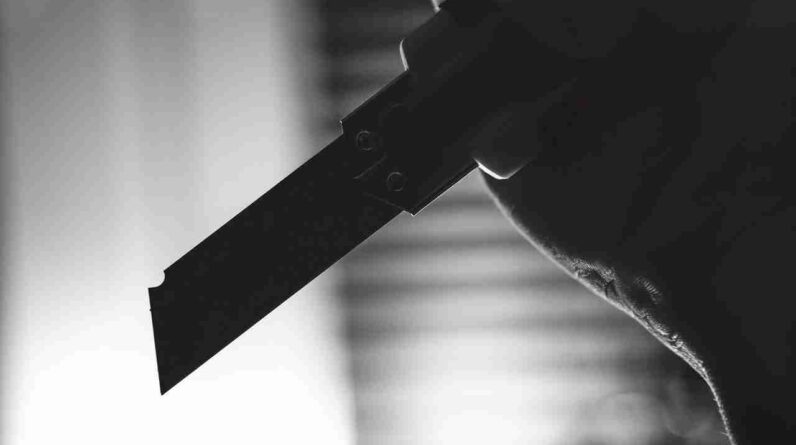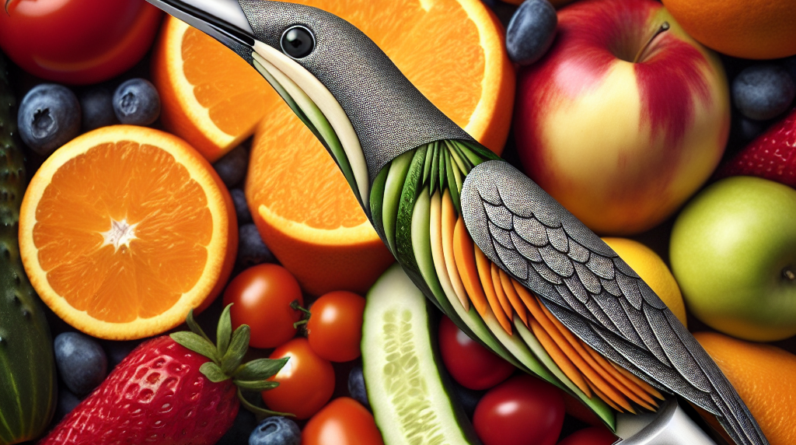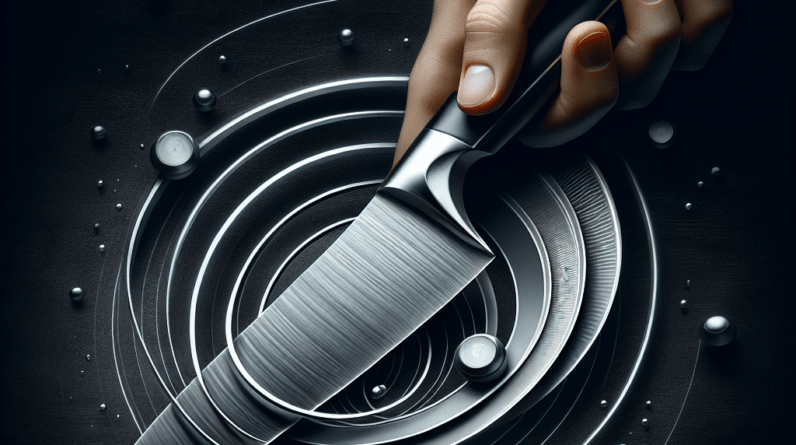When it comes to selecting the perfect knife, we understand the struggle can be real. With countless options to choose from, it’s easy to feel overwhelmed. That’s why we’re here to lend a helping hand in your quest for the ultimate cutting companion. In this article, we’ll guide you through the key factors to consider when selecting a knife, ensuring you make a confident and informed decision. So whether you’re a seasoned chef or a novice in the kitchen, get ready to slice through the confusion and find the knife that will effortlessly tackle all your culinary creations.
Consider the Purpose
When looking to choose the proper knife, it’s important to start by considering your specific needs. What tasks do you anticipate performing with the knife? Will it primarily be used for slicing, chopping, or dicing? Are you looking for a versatile all-purpose knife or one specifically designed for a particular type of cuisine or technique? By identifying your intended use for the knife, you can narrow down your options and focus on finding a knife that will excel in those tasks.
Once you have determined your tasks, it is also crucial to consider the specific tasks you’ll be performing. Different knives are designed for different purposes, so it’s important to match the knife’s features and functions with the tasks you’ll be performing. For example, a chef’s knife with a curved blade is ideal for rocking motions and efficient chopping, while a Santoku knife with a straighter edge excels at precise slicing and dicing. Understanding the tasks you’ll be performing will help you choose a knife that is perfectly suited to your needs.
Understand Knife Types
To choose the proper knife, it’s essential to familiarize yourself with the different types of knives available. There are numerous knife types, each with its own unique features and functions. By understanding these types, you can make an informed decision and select the knife that best suits your needs.
Some common knife types include chef’s knives, Santoku knives, utility knives, bread knives, and boning knives. Chef’s knives are versatile and can handle a wide range of tasks, while Santoku knives specialize in slicing, dicing, and mincing. Utility knives are smaller and more nimble, making them ideal for intricate tasks, while bread knives have serrated edges to effortlessly slice through bread without crushing it. Boning knives, as the name suggests, are designed for separating meat from bones. By familiarizing yourself with these different knife types, you can determine which one will be most useful in your kitchen.

Blade Materials
Blade materials play a significant role in a knife’s performance and longevity. There is a wide variety of materials used for knife blades, each with its own unique advantages and disadvantages. Understanding these materials will help you choose the proper knife for your needs.
One common blade material is stainless steel, known for its corrosion resistance and ease of maintenance. Stainless steel blades are durable and retain their sharpness well, making them a popular choice among home cooks and professionals alike. Another popular choice is high-carbon stainless steel, which combines the benefits of stainless steel with additional hardness and edge retention. However, it can be more prone to staining and requires more diligent maintenance.
For those seeking a more traditional option, carbon steel blades offer exceptional sharpness and edge retention, but they require more maintenance and are susceptible to rust. Damascus steel blades, known for their distinctive pattern, are crafted by layering different types of steel together to create a strong and visually stunning blade. Ceramic blades offer excellent sharpness and retain their edge for an extended period but are more prone to chipping or breaking if mishandled.
By considering the pros and cons of each blade material, you can choose a knife that best suits your preferences and maintenance capabilities.
Blade Length
The ideal blade length for a knife depends on your intended use and personal preference. Longer blades are generally better suited for tasks that require slicing or chopping, as they provide more surface area to work with. However, they may be less maneuverable for precision tasks. On the other hand, shorter blades excel at intricate tasks that require greater control and maneuverability, such as mincing or detailed carving.
When considering the ideal blade length, it’s essential to strike a balance between versatility and maneuverability. A blade that is too long may be cumbersome for delicate tasks, while a blade that is too short may limit your ability to tackle larger ingredients or tasks that require longer strokes. By evaluating your specific needs and considering both the versatility and maneuverability trade-offs, you can select a knife with the ideal blade length for your intended use.

Handle Comfort
The handle of a knife plays a vital role in comfort and control while using the knife. A comfortable grip is essential to ensure a secure hold and reduce fatigue during extended periods of use. When choosing a knife handle, there are several factors to consider.
Firstly, consider the handle material. Common handle materials include wood, plastic, composite materials, and stainless steel. Wood handles offer a classic and natural aesthetic but require more maintenance to prevent cracking or warping. Plastic handles are low maintenance and often feature textured grips for added security. Composite materials, such as G-10 or Micarta, offer durability, moisture resistance, and excellent grip. Stainless steel handles are sleek and durable, providing a balance of aesthetics and practicality.
In addition to the material, consider the handle design. Some handles are ambidextrous, accommodating both left-handed and right-handed users. Ergonomic handles with contoured shapes provide a comfortable and secure grip. It’s important to hold and handle the knife to ensure it feels comfortable in your hand before making a purchase.
By prioritizing a comfortable grip and considering the handle material and design, you can select a knife that will be a pleasure to use for extended periods of cooking.
Knife Weight and Balance
The weight and balance of a knife are crucial factors to consider when selecting the proper knife. The weight of the knife affects its maneuverability, while the balance determines how the knife feels in your hand during use.
The weight of a knife can vary based on the blade material and handle design. Heavier knives provide more power and force when cutting through dense or tough ingredients. However, they may be less agile and require more effort to control for delicate tasks. Lighter knives, on the other hand, offer increased maneuverability and precision but may require additional effort for tougher tasks. It’s vital to choose a knife weight that aligns with your preferences and the tasks you’ll be performing.
Balance refers to how the weight is distributed along the knife’s length. A well-balanced knife feels comfortable and stable in your hand, allowing for precise control and reduced fatigue during extended use. To assess a knife’s balance, hold it at the bolster or chin of the knife (where the blade meets the handle) and see if it feels evenly weighted. Finding the right weight and balance for your preferences will enhance your overall cooking experience.

Maintenance and Durability
When choosing a knife, it’s crucial to consider both its maintenance requirements and overall durability. A knife that is easy to maintain will save you time and effort in the long run, while a durable blade and handle will ensure the knife lasts for years to come.
Stainless steel blades are generally easy to maintain, requiring regular cleaning and occasional sharpening. Carbon steel blades, however, require more attention to prevent rust and staining. Damascus steel blades may require specialized care due to their intricate pattern and layered construction. Ceramic blades are highly resistant to stains and maintain their edge for an extended period but can be more prone to chipping or breaking.
In addition to the blade, consider the durability of the handle material. Wood handles may require periodic oiling to prevent cracking or warping, while plastic or composite handles offer greater resistance to moisture and wear. Stainless steel handles are highly durable and resistant to corrosion.
By ensuring the knife is easy to maintain and evaluating the durability of both the blade and handle, you can choose a knife that will remain in excellent condition and provide reliable performance over time.
Safety Features
Safety should always be a top priority when choosing a knife. While proper handling and technique are essential, certain safety features can provide added peace of mind during use.
Finger guards are one safety feature to consider. These are usually present between the blade and the handle, protecting your fingers from accidentally slipping onto the blade during use. Some knives also feature locking mechanisms that keep the blade securely in place when not in use, reducing the risk of accidental openings or closures.
Additionally, consider the ergonomics of the knife. A knife with a well-designed handle will provide a secure and comfortable grip, reducing the chances of accidents. Knives with textured or non-slip handles offer added stability and control.
By prioritizing knives with secure and reliable safety features, you can minimize the risk of accidents and ensure a safe cooking experience.
Budget Considerations
Setting a budget is an important step when choosing the proper knife. Knives can range in price from affordable options suitable for beginner home cooks to high-end professional-grade knives. Balancing affordability with quality and performance is key to finding a knife that meets your needs without breaking the bank.
Consider your level of expertise and intended frequency of use when setting a budget. If you’re just starting out or don’t anticipate using the knife extensively, a more budget-friendly option may be suitable. However, if you’re a serious home cook or professional chef who relies heavily on their knives, investing in a higher-quality knife may be a wise long-term decision.
While it can be tempting to opt for the most expensive options, remember that price doesn’t always equate to quality. Take the time to research and read reviews to find knives that offer a good balance of affordability, quality, and performance within your budget.
Try Before You Buy
Lastly, if possible, it’s highly recommended to handle and test the knife in person before making a purchase. Every individual has unique preferences and hand sizes, so what may be comfortable for one person may not be for another.
Visit a local kitchen supply store or attend a cooking expo where you can try out different knives. Pay attention to how the knife feels in your hand, its weight, balance, and overall comfort. Imagine yourself performing the tasks you plan to use the knife for and assess whether the knife feels well-suited to those tasks.
By handling and testing the knife in person, you can ensure that it feels comfortable and suits your needs, giving you the confidence to make an informed decision. Remember, choosing the proper knife is a personal decision, and finding the one that feels right in your hand is key to a successful and enjoyable cooking experience.
In conclusion, choosing the proper knife requires careful consideration of several factors. By knowing your specific needs, understanding different knife types, exploring blade materials, evaluating blade length, prioritizing handle comfort, considering knife weight and balance, ensuring maintenance and durability, prioritizing safety features, setting a budget, and trying the knife before you buy, you can select a knife that will be both a valuable tool in your kitchen and a joy to use. Happy cooking!









